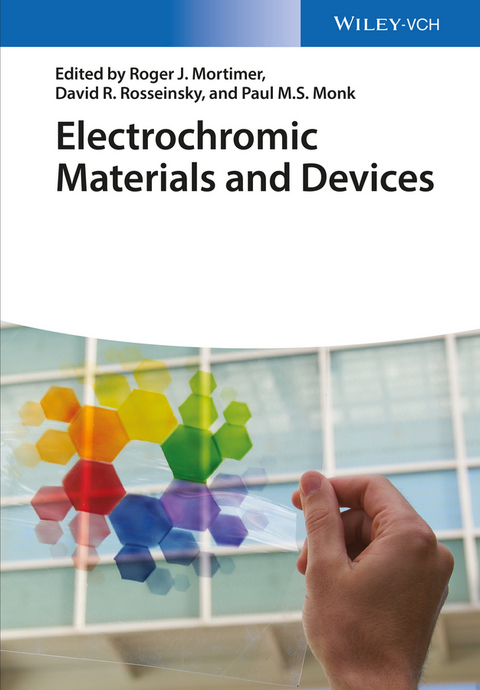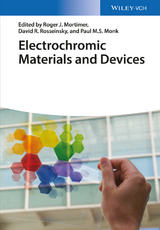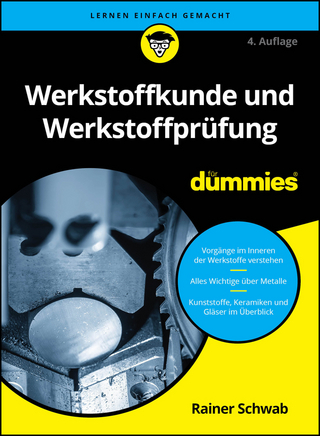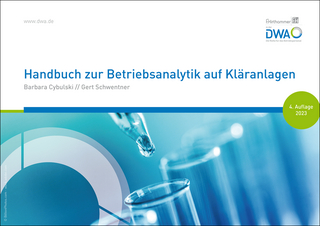Electrochromic Materials and Devices
Wiley-VCH (Verlag)
978-3-527-33610-4 (ISBN)
Electrochromic materials can change their optical properties on the application of an electrical voltage or current. Different classes of materials show this behaviour including transition metal oxides, conjugated polymers, metal-coordinated complexes and organic molecules. As the colour change is persistent, the electric field usually needs only to be applied to effect the switching, allowing for applications such as low energy-consumption displays, light-adapting mirrors in vehicles, and 'smart windows' for which the amount of transmitted light and heat can be controlled.The first part of this book describes the different classes and processing techniques of electrochromic materials. The second part highlights nanostructured electrochromic materials and device fabrication, and the third part focuses on the applications such as smart windows, adaptive camouflage, wearable displays and fashion. The last part of the book comprises case studies and environmental impact issues.From the contents:* Part One: Electrochromic Materials and Processing* Part Two: Nanostructured Electrochromic Materials and Device Fabrication* Part Three: Applications of Electrochromic Materials* Part Four: Device Case Studies, Environmental Impact Issues and Elaborations
Paul M. S. Monk received his PhD in the electrochemistry of novel electrochromic viologen species at Exeter University in 1989. A postdoctoral research fellow position (1989-91) at the University of Aberdeen, in Scotland, was followed by lecturing positions in Physical Chemistry at Manchester Polytechnic (1991-2) then Manchester Metropolitan University (1992-2007). He is currently employed as a Vicar in an inner-city parish in Oldham, Greater Manchester, UK. Roger J. Mortimer was Professor in Physical Chemistry at Loughborough University between 2006 and his untimely death in 2015. He graduated from Imperial College London with a PhD in heterogeneous catalysis at sold-liquid interfaces. After a postdoctoral research fellowship (1980-81) and visiting associate in chemistry (1988) at the California Institute of Technology, he became demonstrator and a Research Assistant at Exeter University. Lecturing positions in Physical Chemistry ensued at Anglia Ruskin University (1984-87) and Analytical Chemistry at Sheffield Hallam University (1987-89), followed by his appointment as a Lecturer in Physical Chemistry at Loughborough University in 1989. David R. Rosseinsky is an Emeritus Professor and Honorary Research Fellow in Physics at Exeter University, having been Reader in Physical Chemistry there from 1979-1998. After Rhodes University he pursued studies leading to PhD then DSc on charge transfer interactions at Manchester University. Following a sojourn at the University of Pennsylvania, from 1959 he became a lecturer at the University of the Witwatersrand in Johannesburg and in 1961, lecturer at Exeter University. With his ex research-student H Kellawi (by then Prof at Damascus University, on sabbatical), they studied Prussian blue and other electrochromic systems, extended in an invited appointment to SIMTech, Singapore, 2000-2002.
PART ONE
ELECTROCHROMIC MATERIALS AND PROCESSING
Electrochromic Materials and Devices: Introduction and Historical Perspective
Electrochromic Metal Oxides: An Introduction to Devices and Materials
Tungsten Oxide: Thin-Film Deposition Techniques and Spectroscopic Properties
Electrochromic Materials and Devices based on Prussian blue and other Metal Hexacyanometallates
Electrochromic Viologens: Devices and Materials
Electrochromic Devices based on Prussian Blue/Viologen Electrochromic Materials
Electrochromic Conjugated Conducting Polymers: Materials, Colour Control and Devices
Electrochromic Conjugated Conducting Polymers: Solution-Processable Polymers
Electrochromism within Transition Metal Coordination Complexes and Polymers
Near-infrared Electrochromic Materials based on Transition Metal Coordination Complexes
PART TWO
NANOSTRUCTURED ELECTROCHROMIC MATERIALS
Nanostructures in Electrochromic Materials and Devices
Nanotubes as Templates for the Fabrication of Fast-switching Electrochromic Materials
Layer-by-layer Assembly of Electrochromic Materials
PART THREE
APPLICATIONS OF ELECTROCHROMIC MATERIALS
Solution-phase Electrochromic Devices for Automotive Mirror and Smart Window Applications
Electrochromic Smart Windows for Dynamic Daylight and Solar Energy Control in Buildings
Fabric Electrochromic Displays for Adaptive Camouflage, Biomimicry, Wearable Displays and Fashion
PART FOUR
DEVICE CASE STUDIES AND ENVIRONMENTAL IMPACT ISSUES
Case Study I: ChromoGenics' ConverLight Electrochromic Foil
Case Study II: Gesimat's Electrochromic Glass Laminates
Life Cycle Analysis (LCA) of Electrochromic Smart Windows
| Erscheint lt. Verlag | 9.9.2015 |
|---|---|
| Verlagsort | Berlin |
| Sprache | englisch |
| Maße | 170 x 244 mm |
| Gewicht | 1565 g |
| Themenwelt | Naturwissenschaften ► Chemie |
| Technik ► Elektrotechnik / Energietechnik | |
| Technik ► Maschinenbau | |
| Schlagworte | Anorganische Chemie • Chemie • Chemistry • Components & Devices • Components & Devices • Electrical & Electronics Engineering • Electrical & Electronics Engineering • Electrochemistry • Elektrochemie • Elektrochromie • Elektrotechnik u. Elektronik • Inorganic Chemistry • Komponenten u. Bauelemente • Materials Science • Materialwissenschaften • Nanomaterialien • nanomaterials • Nanotechnologie • nanotechnology • Optical and Non-Linear Optical Materials • Optics & Photonics • Optics & Photonics • Optik • Optik u. Photonik • Optische u. Nichtlineare Optische Materialien • Organic Chemistry • Organische Chemie • Physical Chemistry • Physics • Physik • Physikalische Chemie • Polymere • Polymer Science & Technology • Polymer Science & Technology • Polymers Special Topics • Polymerwissenschaft u. -technologie • Spezialthemen Polymere |
| ISBN-10 | 3-527-33610-9 / 3527336109 |
| ISBN-13 | 978-3-527-33610-4 / 9783527336104 |
| Zustand | Neuware |
| Haben Sie eine Frage zum Produkt? |
aus dem Bereich




